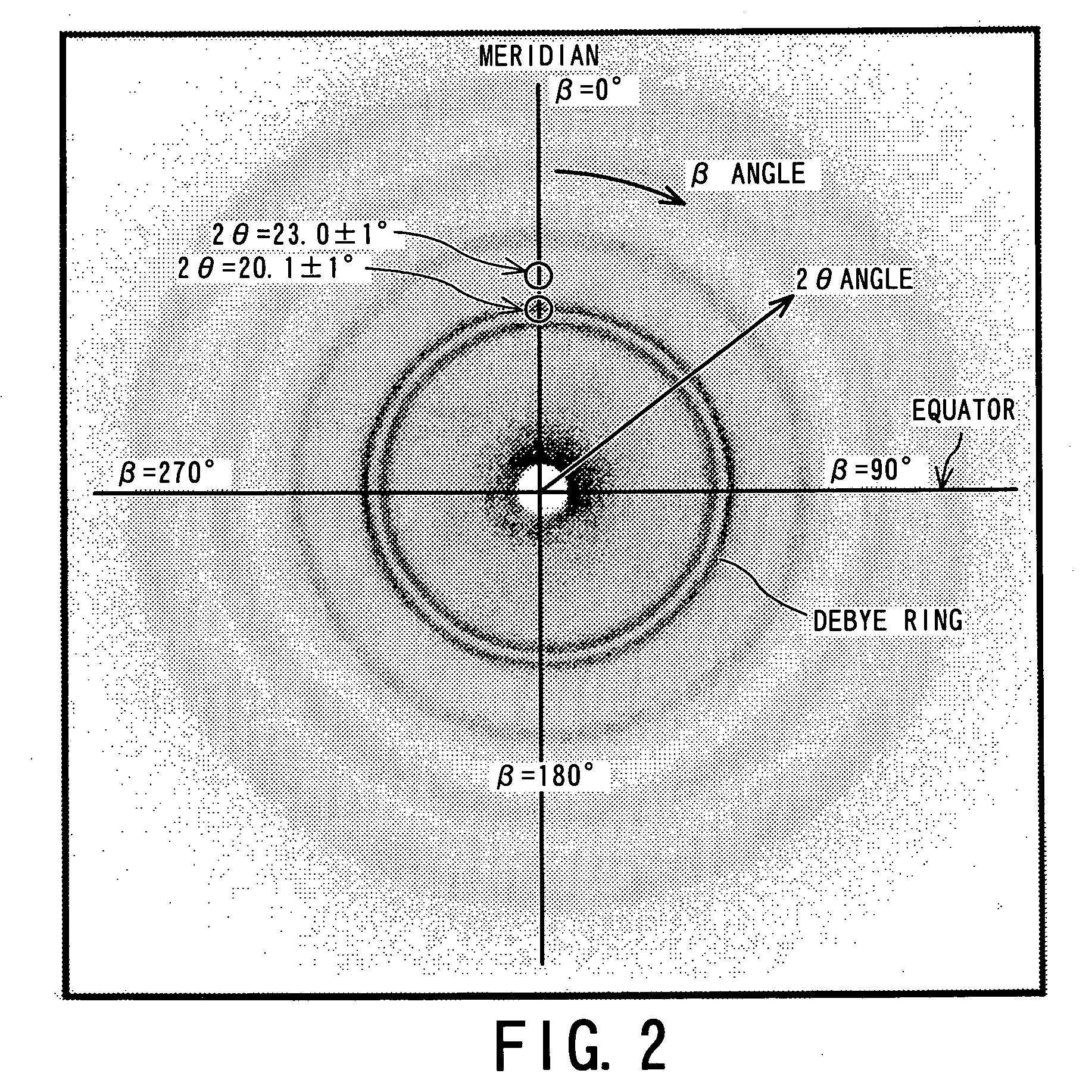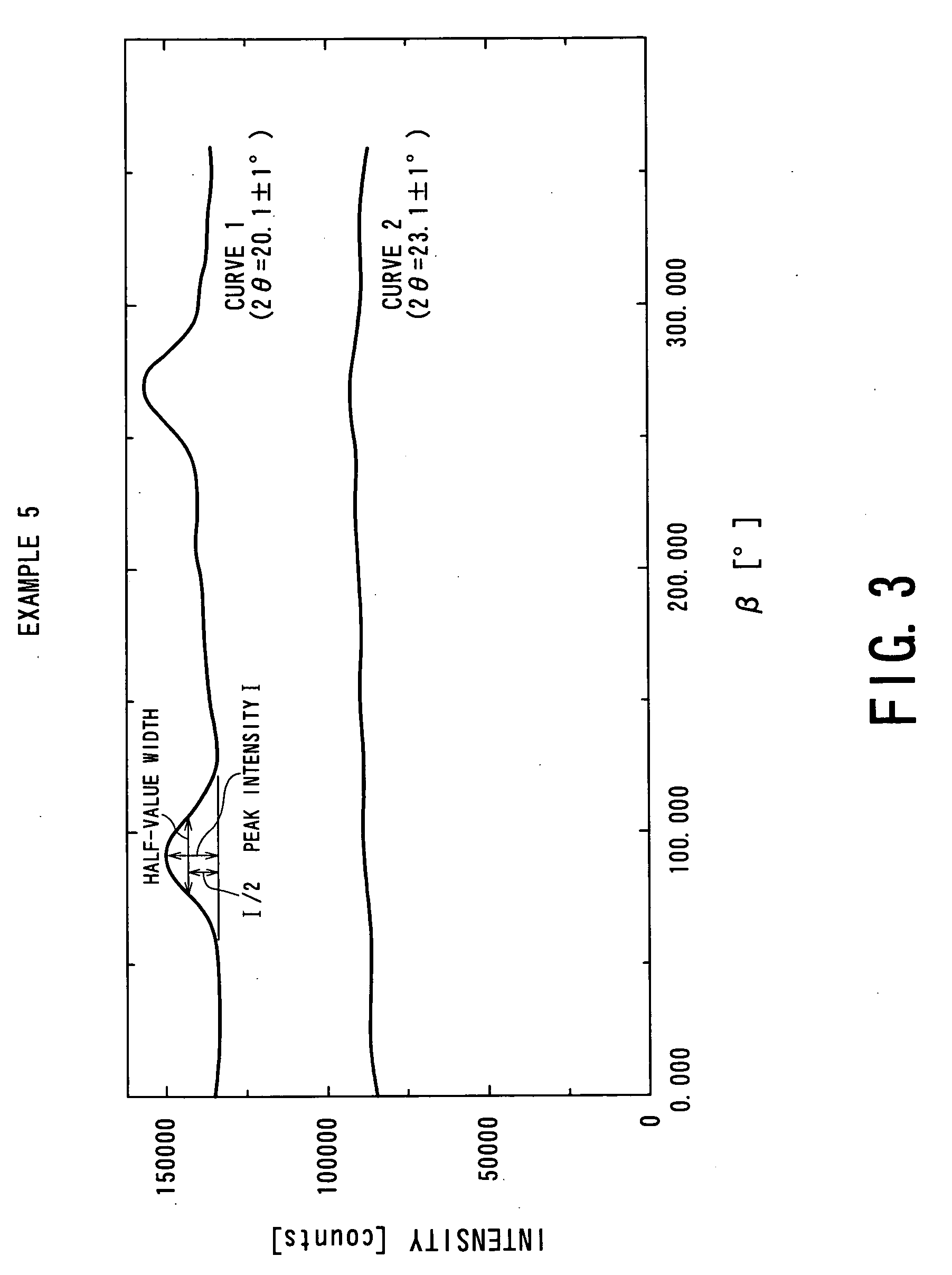Porous membrane of vinylidene fluoride resin and process for producing the same
- Summary
- Abstract
- Description
- Claims
- Application Information
AI Technical Summary
Benefits of technology
Problems solved by technology
Method used
Image
Examples
example 1
[0061] A first polyvinylidene fluoride (PVDF) (powder) having a weight-average molecular weight (Mw) of 6.59×105 and a second polyvinylidene fluoride (PVDF) (powder) having Mw=2.52×105 were blended in proportions of 12.5 wt. % and 87.5 wt. %, respectively, by a Henschel mixer to obtain a mixture A having Mw=3.03×105 and an Mw / Mn (number-average molecular weight) ratio of 2.53.
[0062] An adipic acid-based polyester plasticizer (“PN-150”, made by Asahi Denka Kogyo K.K.) as an aliphatic polyester and N-methylpyrrolidone (NMP) as a solvent were mixed under stirring in a ratio of 87.5 wt. % / 12.5 wt. % at room temperature to obtain a mixture B.
[0063] An equi-directional rotation and engagement-type twin-screw extruder (“BT-30”, made by Plastic Kogaku Kenkyusyo K.K.; screw diameter: 30 mm, L / D=48) was used, and the mixture A was supplied from a powder supply port at a position of 80 mm from the upstream end of the cylinder and the mixture B heated to 100° C. was supplied from a liquid sup...
example 2
[0069] A porous hollow yarn was prepared in the same manner as in Example 1 except that the cooling water bath temperature for cooling the melt extrudate was changed to 11° C., and the stretching ratio was changed to 1.8 times.
example 3
[0070] A porous hollow yarn was prepared in the same manner as in Example 2 except that the supply ratio of mixture A / mixture B was changed to 42.9 / 57.1 (wt. %).
PUM
| Property | Measurement | Unit |
|---|---|---|
| Temperature | aaaaa | aaaaa |
| Thickness | aaaaa | aaaaa |
| Thickness | aaaaa | aaaaa |
Abstract
Description
Claims
Application Information
 Login to View More
Login to View More - R&D
- Intellectual Property
- Life Sciences
- Materials
- Tech Scout
- Unparalleled Data Quality
- Higher Quality Content
- 60% Fewer Hallucinations
Browse by: Latest US Patents, China's latest patents, Technical Efficacy Thesaurus, Application Domain, Technology Topic, Popular Technical Reports.
© 2025 PatSnap. All rights reserved.Legal|Privacy policy|Modern Slavery Act Transparency Statement|Sitemap|About US| Contact US: help@patsnap.com



